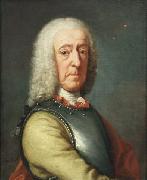Wholesale Oil Painting No Minimum |
|||||||||||
|
|
|||||||||||

|
|||||||||||
|
|
|
||||||||
Andrea SoldiItalian C1703-1771 Italian painter. George Vertue, the only source for Soldi's earliest years, described him in 1738 as a Florentine aged 'about thirty-five or rather more' who had been in England 'about two years'. He had previously been in the Middle East, where he painted some British merchants of the Levant Company who had advised him to go to London. Two three-quarter-length portraits called Thomas Sheppard (1733 and 1735-6; ex-art market, London, 1917 and 1924, see Ingamells, 1974) belong to this period. In London Soldi enjoyed considerable success in the period between 1738 and 1744; Vertue reported that he began 'above thirty portraits' between April and August 1738. He was extensively patronized by the 2nd and 3rd Dukes of Manchester (eight portraits, sold Kimbolton Castle, Cambs, 18 July 1949), the 3rd Duke of Beaufort (four portraits at Badminton House, Glos) and the 4th Viscount Fauconberg (eight portraits at Newburgh Priory, N. Yorks). The seated three-quarter-length of Isabella, Duchess of Manchester, as Diana (1738; London, Colnaghi's, 1986) and the informal full-length of Lord Fauconberg (c. 1739; Newburgh Priory, N. Yorks) exemplify his lively handling, strong colour and theatrical, Italianate imagination. In a less extravagant vein, the Duncombe Family (1741; priv. col., see Ingamells, 1974), a conversation piece of some charm, and the Self-portrait (1743; York, C.A.G.) suggest a versatile talent. Soldi's bravura contrasted with contemporary English portrait practice, then wavering between the sober manner of Kneller and a playful Rococo, and his attraction for Italianate Englishmen was obvious. He was rivalled only by Jean-Baptiste van Loo, who was in London between 1737 and 1742; both artists painted the dealer Owen McSwiny and the poet Colley Cibber about 1738. He far outclassed his Italian rivals, the Cavaliere Rusca (1696-1769), who worked in London from 1738 to 1739, and Andrea Casali, who was in London from 1741 to 1766. |
||||||||
|
|
||||||||
Man in Armour
Man in Armour Painting ID:: 3801 |
Private Collection Private Collection |
|||||||
|
|
||||||||
|
Tintoretto Italian Mannerist Painter, ca.1518-1594 His father was a silk dyer (tintore); hence the nickname Tintoretto ("Little Dyer"). His early influences include Michelangelo and Titian. In Christ and the Adulteress (c. 1545) figures are set in vast spaces in fanciful perspectives, in distinctly Mannerist style. In 1548 he became the centre of attention of artists and literary men in Venice with his St. Mark Freeing the Slave, so rich in structural elements of post-Michelangelo Roman art that it is surprising to learn that he had never visited Rome. By 1555 he was a famous and sought-after painter, with a style marked by quickness of execution, great vivacity of colour, a predilection for variegated perspective, and a dynamic conception of space. In his most important undertaking, the decoration of Venice's Scuola Grande di San Rocco (1564 C 88), he exhibited his passionate style and profound religious faith. His technique and vision were wholly personal and constantly evolving. Man in Armour c. 1550 Oil on canvas, 116 x 98 cm |
||||||||
|
|
||||||||
|
Prev Next
|
||||||||
|
|
||||||||
|
Related Paintings to Tintoretto :. |
||||||||
|
|
||||||||
|
CONTACT US |

